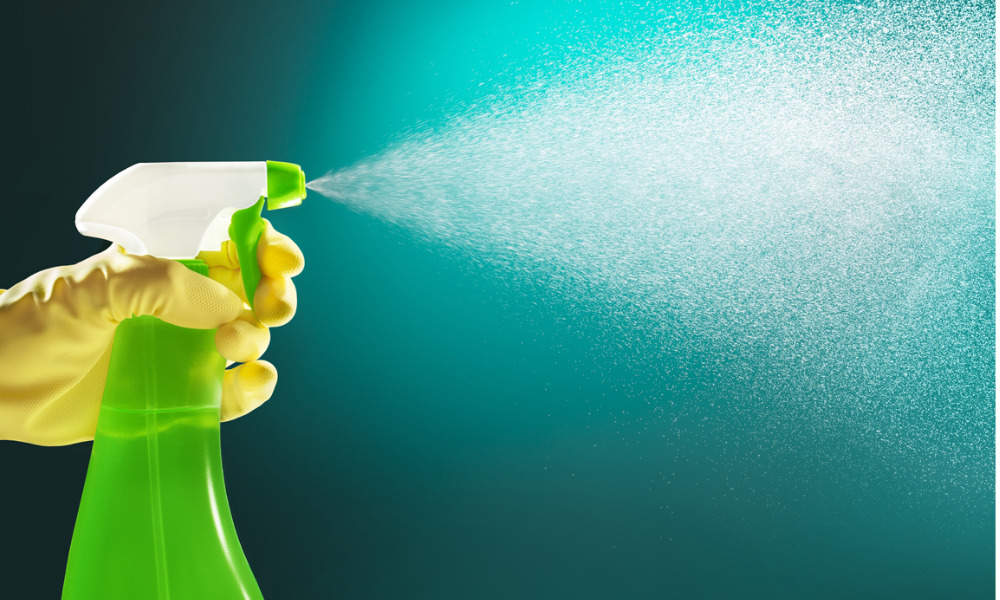Cleaning products expose users to carcinogenic and hormone-disrupting chemicals. These exposures particularly affect members of the Latinx community, a study by a team of high school students and UC Berkeley scientists finds. Switching to low-chemical and homemade cleaning products can reduce a person’s risks.
The study looked at cleaning products through both an environmental and social justice lens. The researchers found that a large percentage of Latina women in their communities were exposed to potentially harmful chemicals on a daily basis while doing domestic labor, where Latinas comprise 81 percent of the workforce. Bearing this reality in mind, the team decided to research ways to reduce these potential harms to their community in the Salinas Valley, California.
In order to gauge the levels of chemical exposure during a typical work day for a domestic laborer, the team outfitted 50 workers, all Latina, with special backpacks designed to monitor air quality of the surrounding environment. The backpacks “sipped” small amounts of air near the workers’ faces and evaluated its chemical contents. The workers repeated this process for two thirty-minute bathroom cleaning sessions; one using traditional cleaning products, and a second time using the workers’ choice of green or homemade cleaning products.To gauge the levels of chemical exposure during a typical work day, 50 domestic workers, all Latina, wore special backpacks designed to monitor the air quality of the surrounding environment.
Many commercially available household cleaning products contain many potentially harmful chemicals including chloroform and benzene, which are known to cause cancer. Other harmful agents include detergents, contaminants and foaming agents such as 1,4-dioxane and cyclosiloxanes. Bleach, solvents and fragrance carriers are all common components of these products which can cause airway irritation, skin reactions, and a host of other problems both from a single overexposure and over time.
To reduce your own exposure to hazardous chemicals in household cleaning products, you can make your own solutions out of common household pantry items, or switch to commercially available green products that don't include harsh chemicals in their ingredients list. Cabrera offers one simple swap for window cleaning solution that can be easily made at home; “All you have to do is mix vinegar, water and dish soap, and there you have it.”
For those looking for guidance on what products to buy to create a more chemically safe home, the Environmental Working Group publishes a frequently-updated list of safer cleaning products.
The study’s authors note that for many, switching to green cleaning products is not accessible or sustainable due to cost issues or job requirements. Moreover, lack of regulation around the term “green” means that choosing which alternative products actually deliver on their promises is difficult; reading lists of ingredients and comparing products just isn’t practical for most people, but it is still possible to reduce exposure through other means.
The team hopes that their research can be used to pioneer environmental protections for domestic laborers and boost general public awareness about the potential harms of hazardous chemicals in common household cleaning products.
The study is available in the journal Environmental Health Perspectives.





